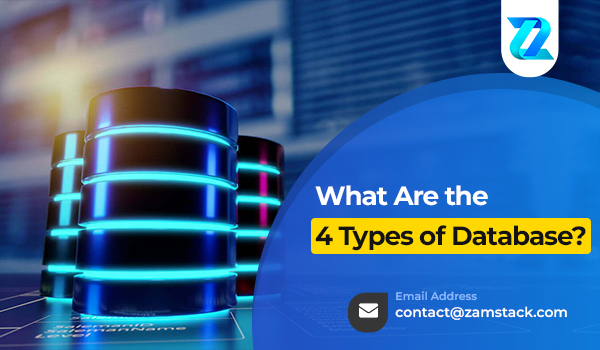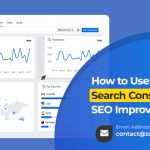Have you ever wondered how apps, websites, and software remember your data? Whether it’s your login credentials, order history, or favorite playlist—databases are working behind the scenes. But did you know there are different types of databases, and each one serves a unique purpose?
In this article, we’ll break down the four main types of databases—explaining how they work, their strengths, and where they fit best. Whether you’re a developer, entrepreneur, or just curious about tech, you’re in the right place!
Relational Databases
What is a Relational Database?
A relational database organizes data into tables—just like spreadsheets. Each row represents a record, and each column represents a field. These tables relate to each other using unique identifiers known as primary keys.
How Relational Databases Work
Relational databases use Structured Query Language (SQL) to access and manage data. You can join tables, filter results, and create relationships between data. This setup makes it easy to handle structured data where relationships are clearly defined.
Use Cases and Examples
-
Banking systems
-
Customer relationship management (CRM)
-
Inventory management
Tools & Software
-
MySQL – Open-source and widely used
-
PostgreSQL – Known for performance and flexibility
-
Oracle DB – Enterprise-level, powerful solution
NoSQL Databases
What is a NoSQL Database?
NoSQL stands for “Not Only SQL”. These databases are designed to handle unstructured and semi-structured data, making them more flexible than relational databases. NoSQL doesn’t rely on tables—instead, it uses different models to store data.
Types of NoSQL Databases
-
Document-oriented (e.g., MongoDB)
-
Key-Value (e.g., Redis)
-
Columnar (e.g., Cassandra)
-
Graph (e.g., Neo4j)
When to Use NoSQL
-
When working with big data
-
When your data structure constantly changes
-
When you need to scale quickly
Tools & Software
-
MongoDB – Great for JSON-like documents
-
Redis – Fast in-memory key-value store
-
Cassandra – Designed for scalability and high availability
Hierarchical Databases
What is a Hierarchical Database?
This is one of the oldest database types, where data is organized in a tree-like structure. Every child record has one parent, forming a hierarchy.
Structure and Design
Think of it like a family tree: each node has a parent and can have multiple children, but only one path leads from child to parent.
Advantages and Limitations
Advantages:
-
Fast data retrieval
-
Simple relationships
Limitations:
-
Rigid structure
-
Hard to reorganize
Examples
-
IBM’s Information Management System (IMS) is a well-known hierarchical database still used in industries like finance and insurance.
Network Databases
What is a Network Database?
Network databases allow many-to-many relationships. Unlike hierarchical databases, a child can have multiple parents. It’s more flexible and efficient for complex data relationships.
Data Model Overview
Uses a graph-like structure where records are nodes and connections are defined by set types (parent-child relationships).
Strengths and Weaknesses
Strengths:
-
Great for complex data
-
Efficient with large datasets
Weaknesses:
-
Can be complex to design and maintain
Real-World Use Cases
-
Telecom systems
-
Airline reservation systems
How to Choose the Right Type of Database
Use Case Analysis
Not all databases are created equal. Choosing the right one depends on:
-
Your data’s structure
-
Scalability needs
-
Read/write frequency
Scalability, Speed, and Structure
Relational databases are ideal when you need strict data integrity. NoSQL is perfect for scaling quickly. Hierarchical and network databases are great for specific legacy systems.
The Role of Databases in Web Development
Why Zamstack Technologies Relies on the Right Database
At Zamstack Technologies, we understand that picking the right database isn’t just about tech—it’s about delivering fast, reliable, and scalable digital solutions to our clients.
How We Match Businesses With the Perfect Data Solution
We assess each project’s requirements, performance goals, and data complexity to recommend the best-fit database—be it relational, NoSQL, or something niche.
Conclusion
Choosing the right database isn’t a one-size-fits-all decision. Whether it’s the structured precision of relational databases, the flexible power of NoSQL, or the specialized capabilities of hierarchical and network models—each has its place in the digital world.
So the next time you use an app, book a flight, or shop online, just know—a powerful database is working hard behind the scenes.
FAQs
1. What is the difference between relational and NoSQL databases?
Relational databases use tables and SQL; NoSQL uses flexible formats like documents, key-value pairs, and graphs.
2. Which database is best for large data sets?
NoSQL databases like MongoDB and Cassandra handle big data more efficiently.
3. Are hierarchical databases still used?
Yes, mostly in legacy enterprise systems like IBM IMS.
4. Can you convert a relational database into NoSQL?
It’s possible but requires restructuring your data model based on application needs.
5. What’s the best database type for web applications?
Relational databases like MySQL or PostgreSQL are great, but NoSQL is better for scalability and dynamic content.







